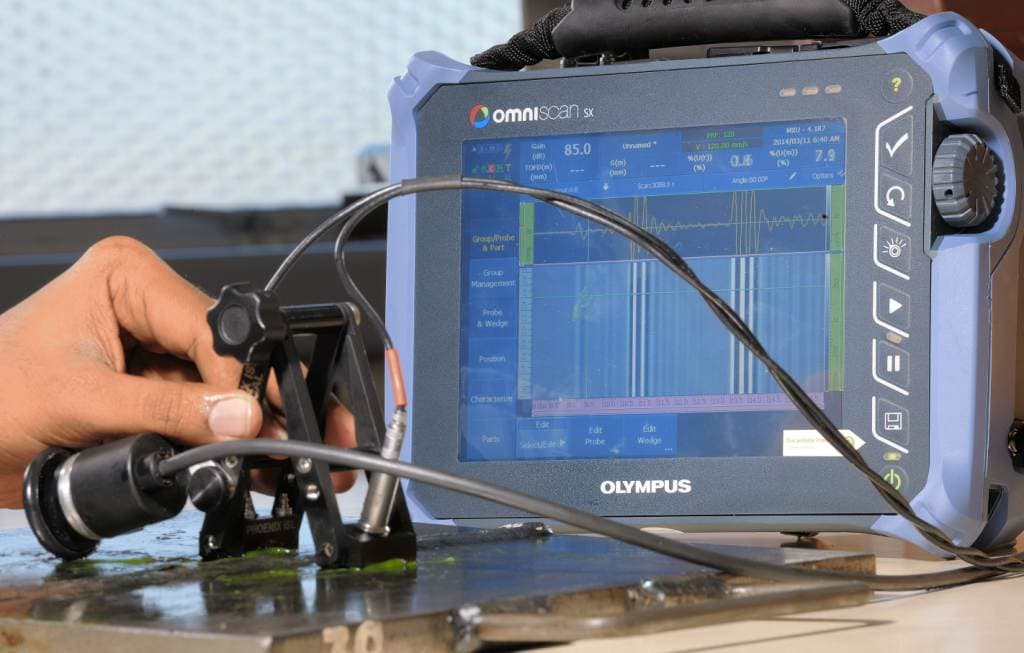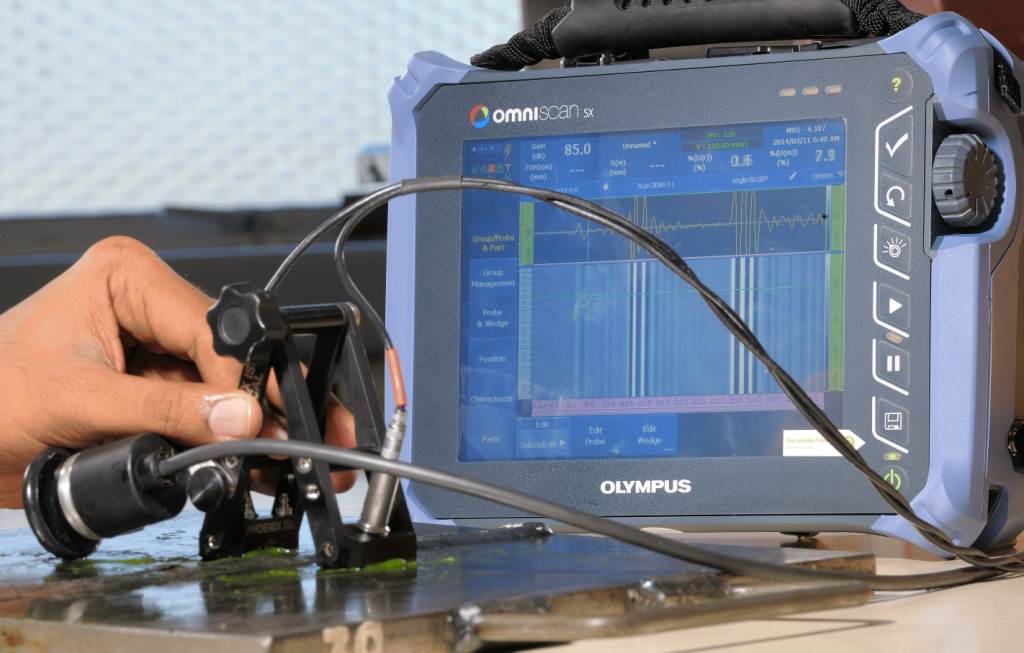
The ultrasonic testing is used to assess the quality of concrete regarding the homogeneity and integrity. It is also used to conclude the cracks in the house. It also used to assess the honeycombing, durability, workmanship and compaction of concrete. This UPV test is carried out by passing the ultrasonic pulse through concrete and measuring the time taken by the pulse to get through the concrete. However, the results of the UPV test show the quality of concrete only, as the ultrasonic pulse velocity in concrete is affected by many other factors.

Ultrasonic Pulse Velocity Measuring Device
We have already discussed the procedure of ultrasonic testing and advantages of ultrasonic inspection in the concrete structures. Here are the factors which affect the ultrasonic pulse velocity of UPV Test in concrete components.
The Factors Affecting the Ultrasonic Pulse Velocity in Concrete:
Following are the factors which affect ultrasonic pulse velocity of UPV test in concrete. Ultimately they affect the results of ultrasonic testing.
01. How the Path Length Affect the Ultrasonic Pulse Velocity?
The path of the ultrasonic pulse should be long enough. It should not be influenced by the heterogeneous nature of concrete.
The table below shows the minimum path length and nominal maximum size of aggregates for the concrete.
Nominal Maximum Size of Aggregate | Minimum Path Length for Concrete |
| Less or 20 mm | 100 mm |
| 20 mm to 40 mm | 150 mm |
The ultrasonic pulse is generally not affected by the path length. But the electronic timing apparatus may show a tendency for pulse velocity to reduce slightly with increasing path length.
02. How the Lateral Dimensions of the Specimen Affect the Ultrasonic Pulse Velocity?
The ultrasonic pulse through the specimen is independent of the size and shape of the specimen unless it’s least lateral dimension is less than the minimum value. If this value is below the minimum value, the pulse velocity may be reduced.
The amount of fall in value depends on the ratio of the wavelength of the pulse to the least lateral dimension of the specimen. It is insignificant if the ratio is less than unity.
03. How the Presence of Reinforcement Steel Affect the Ultrasonic Pulse Velocity?
The ultrasonic pulse measured in RCC structure in the region of reinforcing bars is usually higher than in concrete of the same composition. That is because the ultrasonic pulse in steel may have velocity twice in concrete.
The influence of the reinforcement is small if the bars run in a direction at right angles to the pulse path. The influence is also small if the quantity of reinforcement is small in relation to the path length.
04. How the Moisture Content of the Concrete Affect the Ultrasonic Pulse Velocity?
The moisture content has two effects on the pulse velocity, one is chemical, and the other is physical. The ultrasonic pulse is influenced by
- The effect of different curing condition between a cured standard cube and a structural element made of the same concrete.
Learn how to do Curing of concrete.
- The pulse of UPV test is also affected due to the presence of free water in the voids of concrete.
In ultrasonic testing, it is important to consider these effects while estimating the strength of concrete.
05. How the Concrete Uniformity Affect the Ultrasonic Pulse Velocity?
Heterogeneity in the concrete within or between members causes variations in pulse velocity, which in turn are related to variation in quality. The measurement of ultrasonic pulse provides a means of studying the homogeneity, and for this purpose, a system of measuring points (grid points) which covers uniformly the appropriate surface of concrete members are adopted. The size of the grid chosen will depend on the size of the structure. It also depends on the amount of variability encountered.
In uniform concrete, testing on a 1m grid is usually adequate. A finer grid may be necessary for small units or variable concrete or doubtful concrete.
It is a need to express coefficient of variation of the pulse velocity. It can be used to compare variations in concrete units of similar dimensions.
06. How the Temperature of Concrete Affect the Ultrasonic Pulse Velocity?
There is no significant change in elastic properties of the concrete when the temperature is within 10 to 30-degree centigrade. But pulse velocity needs to be corrected when the temperature is higher than 30-degree centigrade.
Ultrasonic pulse velocity test method to has some limitation. The manual operation of the instrument requires careful attention by experienced technicians. If the surface is irregular, it is difficult to estimate the pulse velocity. The test object must be water resistant. The ultrasonic test is not the conclusive test for determining the compressive strength of concrete. It gives an indication of concrete quality. If the concrete is of inferior quality, then carry out concrete core test to assess the strength. The engineer has to exercise his own judgment for taking a decision in this matter.
Must Read:
Rebound Hammer Test Procedure
Rebound Hammer Test Result
Use of Rebound Hammer Test and its Limitation






























